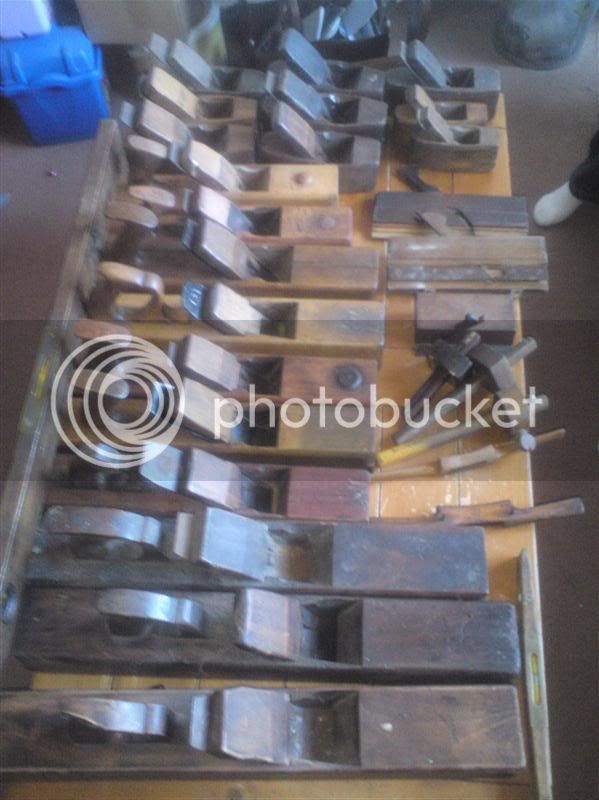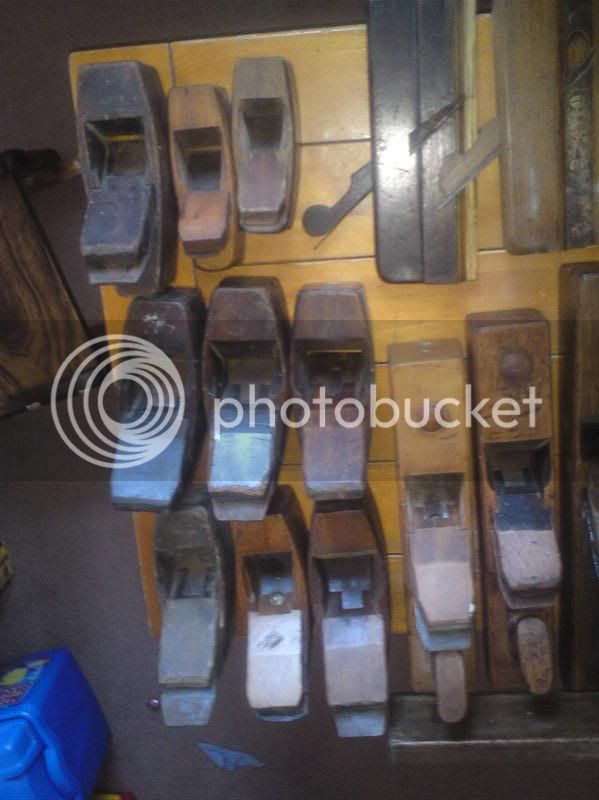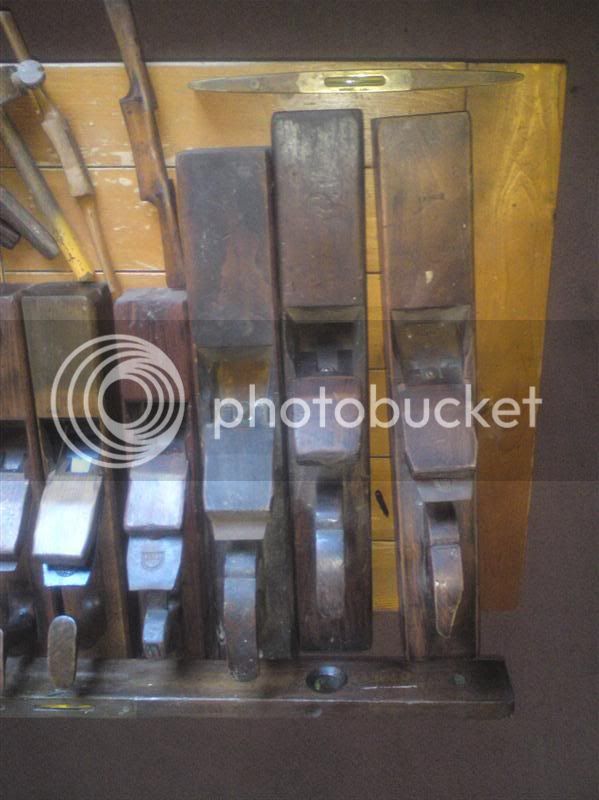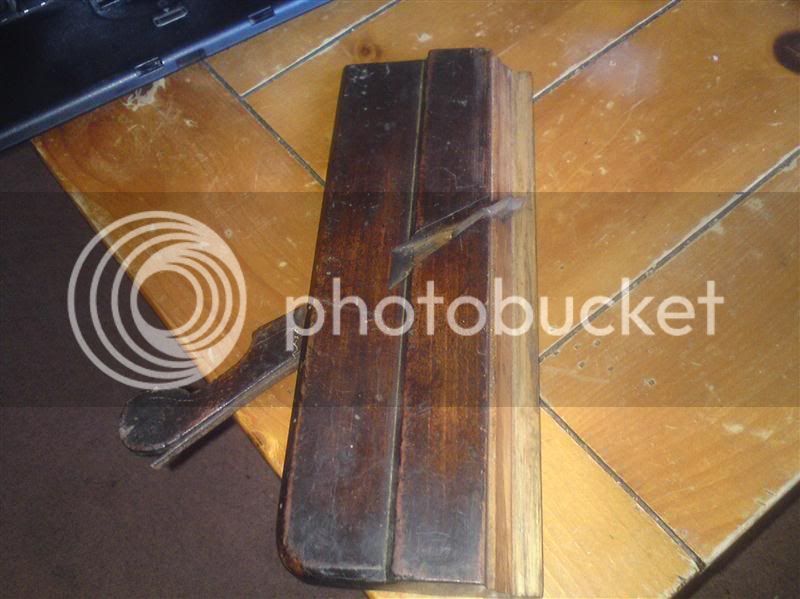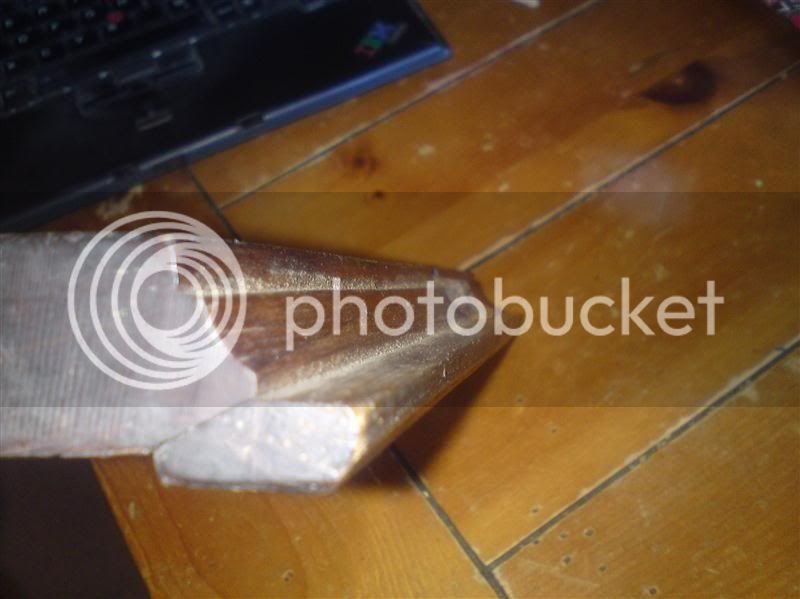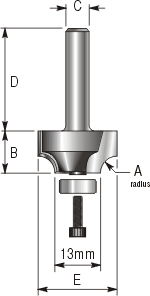Hi Dibs!
I think you're probably right when you surmise that different people use different names (and after all, does it matter what it's called as long as it does the job it's supposed to?), but the 'authority' I use is "Modern Cabinet Work" by Wells and Hooper. My copy is a reprint of the 1922 3rd edition, which I aquired from Amazon, to take advantage of their usual discount pricing.
Messrs Wells and Hooper define a 'jointer' as between 26" and 30" long, and a 'trying' or 'true-ing up' plane as usually 22" long, though shorter ones are known as 'panel planes', and have a removable slip on the bottom edge allowing the iron to work close in to a raised panel.
So if Messrs Wells and Hooper are wrong, so am I!
I've only got one woody bench plane, a jack bought years ago from Bristol Design. Learning to set the iron is a bit of a fiddle, but once you 'get it' it's a nice plane to use. It glides over the wood much more sweetly than my metal planes, and you can shift a lot of waste with it. I've seen it written somewhere that the bench for wooden plane work should be about 3" lower than a bench for metal plane work, as it allows you to 'get over the plane' more easily (taking account of the extra depth of the woodies). I can see what's meant by this, but I use mine on my 'normal' height bench, and like a lot of things that are not strictly 'right' by the book, it seems to work OK. Mind you, I'm not planing all day every day.
I think it would be fun to select the best of those planes, sharpen them up and have a go. If nothing else, it'll add to the variety of life, and if you really don't get on with them, you can always do as Blister has!
